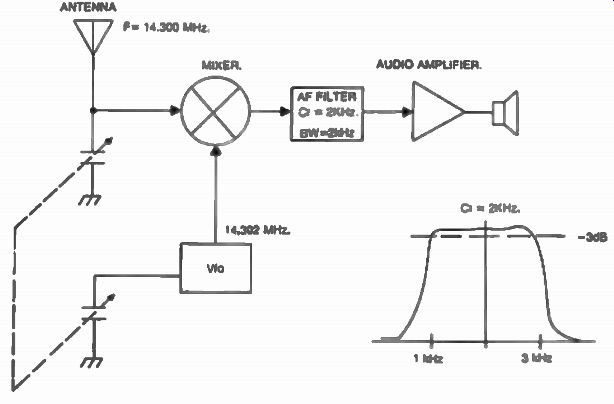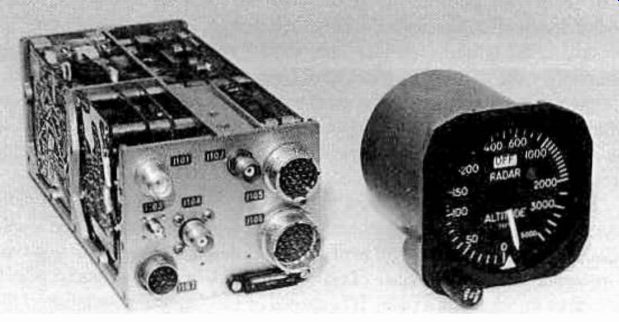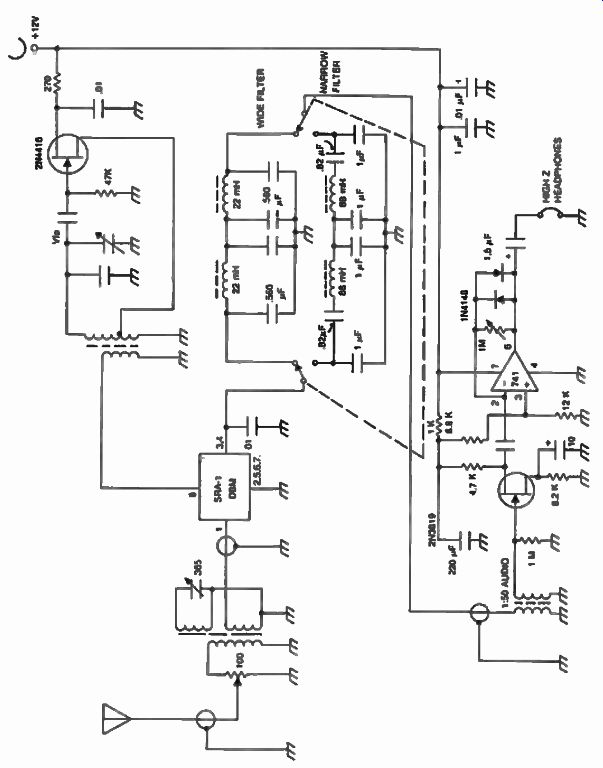Another kind of superheterodyne is the well-known direct conversion type.
Figure 1 shows a block diagram for such a receiver. Its i-f is at audio frequencies since the Vfo runs practically at the received frequency, offset only by the center of audio frequency range of interest, in our case 2 kHz.
Disadvantages of the direct-conversion receiver are primarily the very close image which cannot be eliminated and the hum that comes with the high level of amplification in the al stage. Hum is also caused by the so-called common-mode syndrome. That is, local oscillator energy can be radiated to the ac power supply where it mixes with 60 and 120 Hz in the rectifier and is then radiated back to the receiver front end.
The direct conversion receiver (also known as the synchrodyne, or the zero i-f receiver) is not usually used in practical communications except as a monitoring device in some military or commercial applications. Figure 2 shows a radar altimeter which uses such a receiver to process signals reflected by the ground, in order to determine the altitude of an aircraft.
As a communication receiver, the direct conversion approach is not suitable for single sideband reception since a signal present on one side of the zero beat center will interfere with the desired side, unless a phasing circuit is used.
Direct conversion receivers are not suitable for agc. One means of overcoming this would be to implement an audio compressor and that would approach an effect similar to that of the agc. Another deficiency of this type of receiver is microphonics, (Technical term used for an audio effect, noticed by knocking on a radio. It is caused by mechanical modulation of the rf frequency, generated by the Vfo.) especially at higher rf frequencies.
Figure 3 shows a practical design for a dc receiver. Before going into the anatomy of a modern receiver, we'll look at another type of superheterodyne which is a very interesting case.

Fig. 1. Direct conversion receiver block diagram.

Fig. 2. The APN-1 94 radar altimeter uses a direct conversion (zero
i-f) receiver in its signal path.

Fig. 3